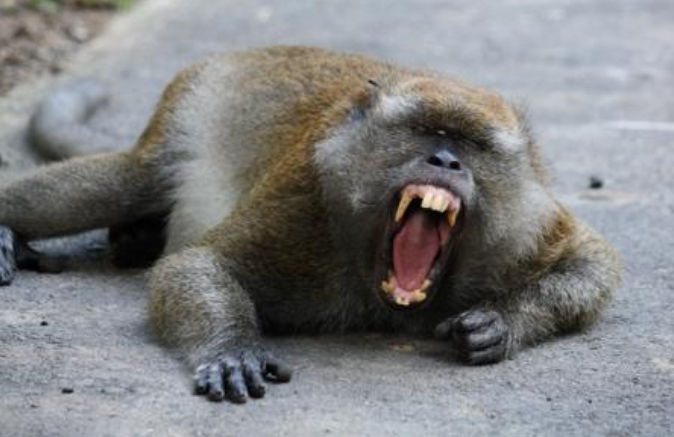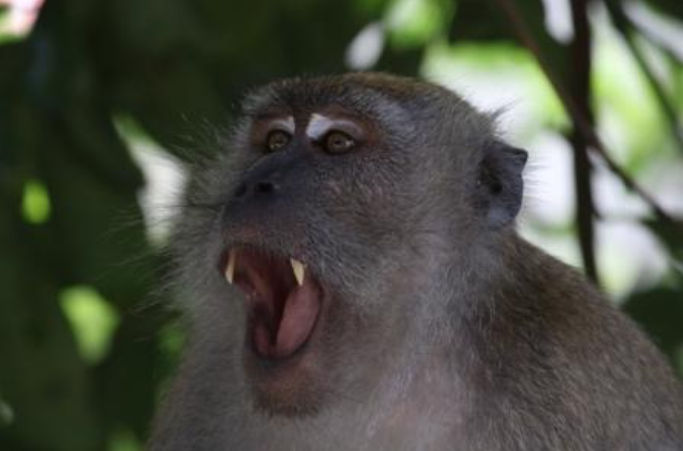4 Macaque Body Language Signs To Help Us Avoid Human-Wildlife Conflict

Long-tailed Macaque Behaviour
With the recent surge of reported human-wildlife interactions, the need to understand our wild neighbours has never been more imperative. Animals exhibit an array of behaviours to communicate their feelings but humans are often not equipped to understand them.
Hence, we have put together a short behavioural etiquette cheat sheet featuring some of our prominent wild neighbours. How many of these behaviours can you recognise?
Fear Grin
Photo Credits: Sabrina Jabbar
While this cheeky “smile” might look like an invitation for a memorable selfie, it is quite the opposite! This teeth-bearing behaviour is better known as the fear grin. Not to be mistaken with a smile, the fear grin is displayed when macaques are fearful. It is a warning sign for you to not go any closer — put that phone back in your pocket too, as that Instagrammable photo will have to wait!
Lip Smacking
Photo Credits: Sabrina Jabbar
A peculiar behaviour displayed by macaques is lip smacking. Between macaques, lip smacking is used to show submission, affection and reconciliation. This behaviour is a form of communication and is sometimes accompanied with cooing vocalisations and mild raising of eyebrows. To their less hairy human counterparts, lip smacking is displayed to show submission when under threat.
Raised Eyebrow
Photo Credits: Sabrina Jabbar
A behaviour that we may find familiar among macaques is the raised eyebrow. Like how humans raise our eyebrows in surprise, macaques also display this behaviour, together with body arching and the formation of an “o” shaped mouth when they are alarmed. This is an early defensive behaviour, so do not alarm the macaque further. Stay calm and give them space.
Yawning (sleepy/angry)
Photo Credits: Sabrina Jabbar
While yawns indicate fatigue in humans, macaques have two types of yawns that communicate two distinctly different moods. The first type of yawn is known as the sleepy yawn. Similar to human yawns, the sleepy yawn is exhibited when the macaque is, well, sleepy! This behaviour can be recognised alongside sluggish body language, overall disinterest and eyes that are not fixed on any particular subject.
Photo Credits: Sabrina Jabbar
The second type of yawn is the angry yawn. No longer a sign of sleepiness, the angry yawn is a defensive behaviour displayed when a macaque feels threatened. It is usually accompanied with vocalisations resembling a “KRAA” sound, fixed eye gaze, fake lunges and raised eyebrows to indicate agitation and threat. Such behaviours may intensify depending on the situation, so stay a safe distance away upon seeing this very telling yawn!
Reducing Human-Wildlife Conflict
We hope this short guide has shed some light on recognising common long-tailed macaque behaviours. Remember, at the end of the day, we are all neighbours sharing this planet. In the same way we learn to live with the quirky habits of our human neighbours, we should extend our graciousness to our wildlife neighbours!
Special thanks to:
Sabrina Jabbar
WRSCF Research Assistant
Raffles’ Banded Langur Working Group





